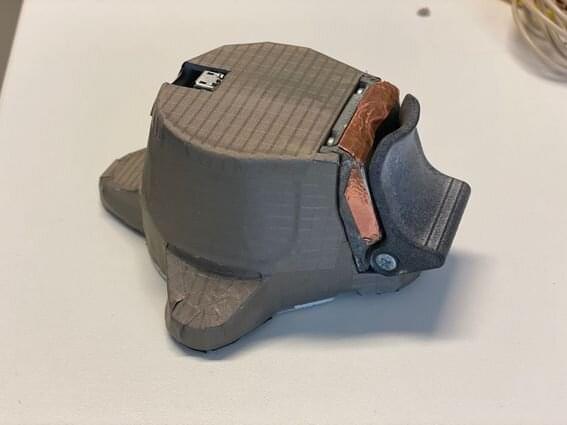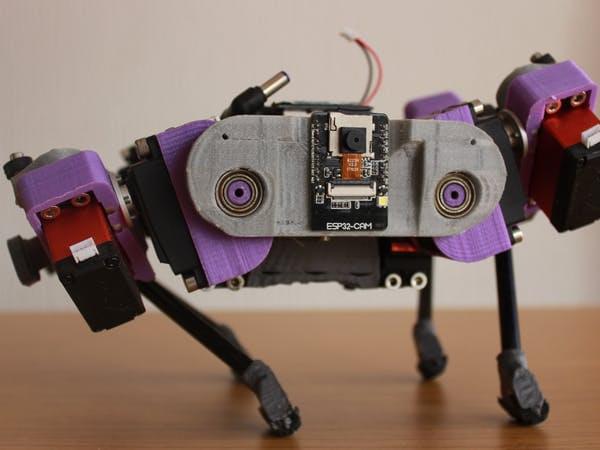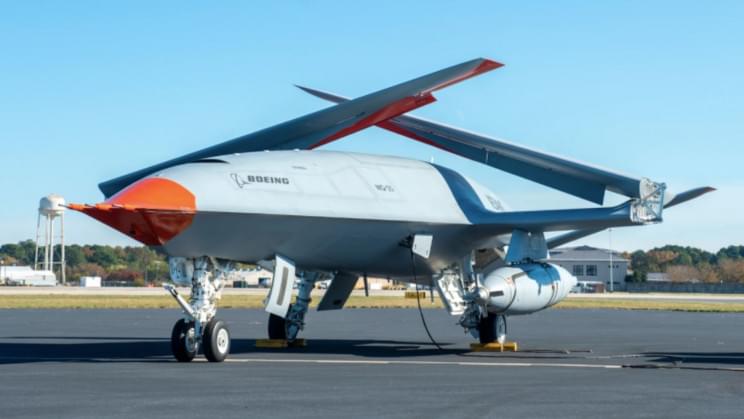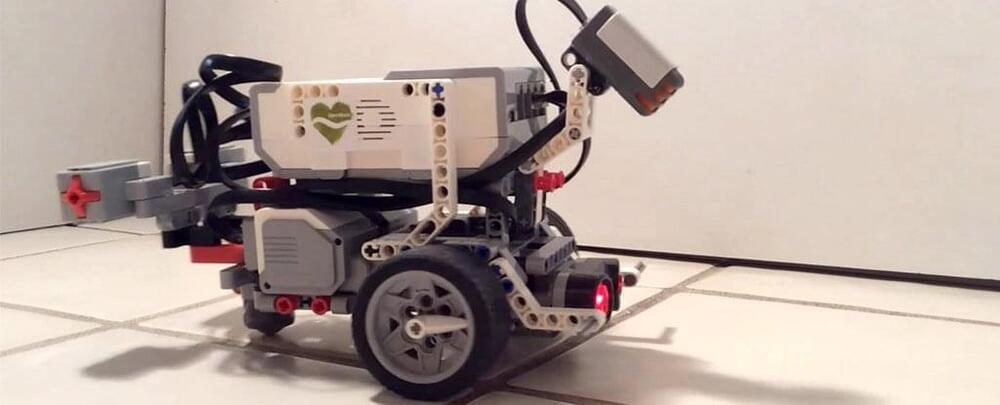Amazon’s new service, AWS IoT RoboRunner, is designed to orchestrate fleets of robots and provide a repository for robotics systems data.



Stethoscopes are among doctors’ most important instruments, yet there have not been any essential improvements to the device since the 1960s. Now, researchers at Aalto University have developed a device that analyzes a broad range of bodily functions and offers physicians a probable diagnosis as well as suggestions for appropriate further examinations. The researchers believe that the new device could eventually replace the stethoscope and enable quicker and more precise diagnoses.
A startup called Vital Signs is taking the device to the market. The researchers are currently testing the device in a clinical pilot trial. The intention is to launch the product to the most important European markets by the end of 2023.
“We have a well-functioning prototype, and the development path is clear,” says Alexis Kouros, the doctor leading the research team at Aalto.

Created by Wissam Tedros, RoDog is a reliable and hobby-level quadruped robot constructed out of accessible parts. The project implements a dozen RC servos actuators, measurement units such as a gyroscope, accelerometer, magnetometer, and unity for inertial measurement, an ESP32-CAM for streaming and WiFi connectivity, an OLED display, and more, all within a 3D-printed casing.
Entirely open source, Tedros’ post includes the BOM and all necessary files, as well as notes on mechanical design and assembly and data obtained from a MATLAB Simulink trial of the inverse kinematic control used with the embedded system. RoDog features a custom STM32F4 board for its brain, with the design available in full detail. The bot is quite compact at 20×10×5 cm, and the 12 motor controller board incorporates position and current feedback.
It is still in development 0, having gone through many iterations and tweaks, most of which are logged in the project files. However, its current form should perform well as a hobbyist’s robotic pet with room for add-ons.

Micro-sized cameras have great potential to spot problems in the human body and enable sensing for super-small robots, but past approaches captured fuzzy, distorted images with limited fields of view.
Now, researchers at Princeton University and the University of Washington have overcome these obstacles with an ultracompact camera the size of a coarse grain of salt. The new system can produce crisp, full-color images on par with a conventional compound camera lens 500,000 times larger in volume, the researchers reported in a paper published Nov. 29 in Nature Communications.
Enabled by a joint design of the camera’s hardware and computational processing, the system could enable minimally invasive endoscopy with medical robots to diagnose and treat diseases, and improve imaging for other robots with size and weight constraints. Arrays of thousands of such cameras could be used for full-scene sensing, turning surfaces into cameras.

To persist, life must reproduce. Over billions of years, organisms have evolved many ways of replicating, from budding plants to sexual animals to invading viruses.
Now scientists have discovered an entirely new form of biological reproduction—and applied their discovery to create the first-ever, self-replicating living robots.
The same team that built the first living robots (” Xenobots,” assembled from frog cells—reported in 2020) has discovered that these computer-designed and hand-assembled organisms can swim out into their tiny dish, find single cells, gather hundreds of them together, and assemble “baby” Xenobots inside their Pac-Man-shaped “mouth”—that, a few days later, become new Xenobots that look and move just like themselves.

This is what we are experiencing over the next ten years in the near vertical rate of change. We are in these last stages of these changes where we can shape this future into the flowers analogy. The confluence of environmental, social, biological, physical, digital-inspired, technological, quantum-infused, cosmological, creator culture; an endless list. All significantly transforming our lives. We are in the time where creativity, innovation, intuition, imagination, inspiration, purpose, meaning can be driving us.
What we are experiencing forms my top 10 omni wishes for 2022 that will have outsized impact on our lives.
Top Ten Omni Wishes.
Full Story:
I work pro bono daily across communities of more than 100,000 CEOs, investors, authorities/experts/scientists, and thought leaders. From insights gained in this work, I’m providing my top ten omni (multiple sector) wishes for 2022 that will have exponential impact.
Inline with the theme of this article and while writing this article, I’m experimenting with a new A.I. writing tool based upon OpenAI and GPT-3 from Sudowrite.
The world is experiencing more exponential dramatic changes in the next ten years than in the past 10,000 years. Let me provide a picture of how fast these changes are coming where the rate of change isn’t a sloped line but now a nearly vertical line going up.

With the increasing demand for data science approaches and cognitive technologies across all industries, organizations are learning how to successfully implement and manage newer, more intelligent tools and systems. What are the challenges that enterprises encounter when adopting AI and ML models for their organizations, and how can teams work to overcome these obstacles?
At an upcoming Data for AI event, Anil Kumar, Executive Director — Head of AI Industrialization at Verizon will be sharing in particular the ways that Verizon has leveraged AI to overcome some of their key challenges. This past January, the Machine Learning Lifecycle 2021 Conference featured Radha Sankaran, Executive Director of Algorithmic Customer Experiences at Verizon Wireless, where she shared some insight into the current state of AI usage and its challenges, techniques, and impacts. At the upcoming Data for AI virtual event, Anil Kumar, also from Verizon Wireless, will be speaking more on his experiences.
Full Story:

Substantially extending the strike range of fighter jets.
Boeing’s unmanned air tanker MQ-25 Stingray is currently completing ground tests at the Naval Station Norfolk in Virginia in preparation for a carrier demonstration, the U.S. Navy confirmed in a press release.
Unveiled over three years ago, the MQ-25 or T1 tanker is designed to refuel naval fighter aircraft mid-air. Although mid-air refueling is common practice for the U.S. military, this is the first attempt with an unmanned drone. The MQ-25 has been making rapid strides since its unveiling and has successfully completed a refueling attempt of the F-35C aircraft in September this year.
The drone tanker is now moving a step closer to deployment. According to the press release, the U.S. Navy and Boeing are moving through ground tests currently and aiming for a carrier demonstration in December. As part of the tests, the team recently completed deck handling where the engines on the aircraft were up and running and the taxiing was handled by controllers on the deck.
Full Story:

Circa 2017
The brain is really little more than a collection of electrical signals. If we can learn to catalogue those then, in theory, you could upload someone’s mind into a computer, allowing them to live forever as a digital form of consciousness, just like in the Johnny Depp film Transcendence.
But it’s not just science fiction. Sure, scientists aren’t anywhere near close to achieving such a feat with humans (and even if they could, the ethics would be pretty fraught), but there’s few better examples than the time an international team of researchers managed to do just that with the roundworm Caenorhabditis elegans.
C. elegans is a little nematodes that have been extensively studied by scientists — we know all their genes and their nervous system has been analysed many times.
